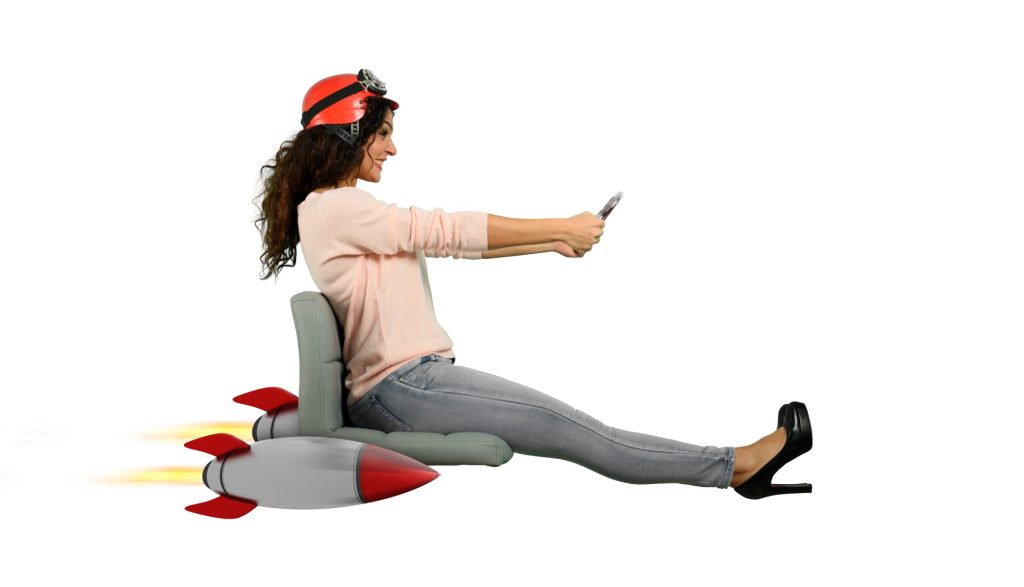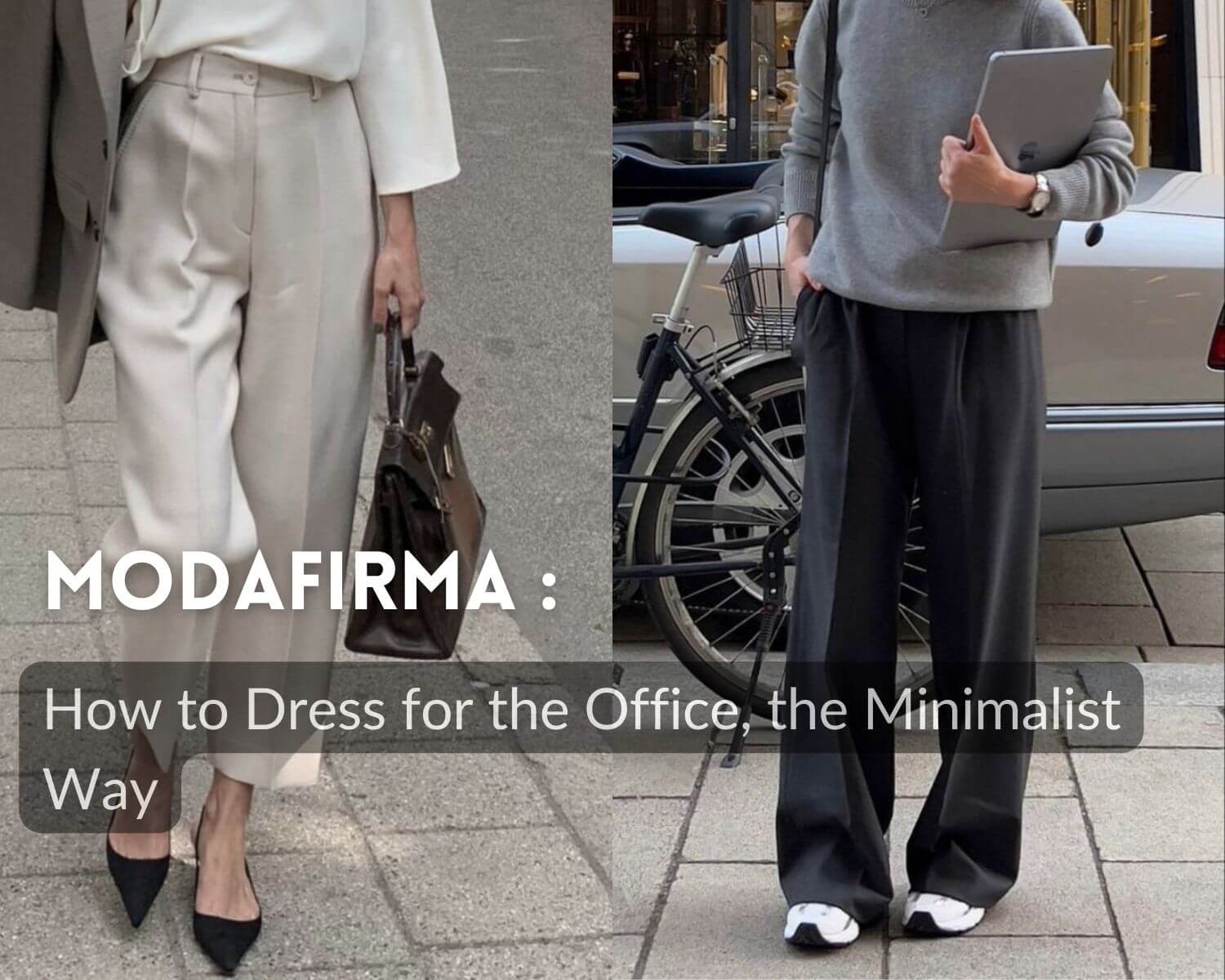Table of Contents
 If you’re a brick and mortar merchant, we’re willing to bet that you’re constantly cooking up ways on how to increase walk-ins in your retail store. After all, more visitors lead to more opportunities to drive sales, which means a higher bottom line and healthier business overall.
If you’re a brick and mortar merchant, we’re willing to bet that you’re constantly cooking up ways on how to increase walk-ins in your retail store. After all, more visitors lead to more opportunities to drive sales, which means a higher bottom line and healthier business overall.
But how exactly can you drive footfall to your retail location?
To answer that, we’ve compiled 10 ideas and examples for how to increase retail footfall. Go through them and try to incorporate these pointers in your retail marketing strategy.
1. Keep up with the seasons — and pop culture
Nothing keeps people away more than a stale and outdated store, so if you’re looking to increase footfall, one of the first things you should do is freshen up your windows and in-store displays.
Give people new and relevant reasons to check out your store. You can do that by incorporating trendy and seasonal elements into your displays.
Keep up with the seasons
If people are gearing up for the back to school season, make sure your store visuals reflect that. Or, if a particular season is in full swing, come up with relevant themes to use in your displays.
Take Pink Pointes Dancewear, a UK-based dance shop. A while back, Laura Watkins, the owner of the store, decided to use autumn as inspiration for her store’s display.
“When I first took over running our shop the new Bloch Militare boot has just come out. It’s a split sole dance shoe but looks like a boot,” she recalled.
“It happened to be September and the leaves were beginning to change so I made a display with hundreds of leaves in beautiful autumnal colors and this pair of boots on top as they looked like Dr. Matens and great for stomping in piles of leaves.”
According to Laura, the effort was a success, and several people walked in complimenting it.
Consider pop culture or current events
Depending on your products and customers, you could even incorporate pop culture into your displays.
The jewelry retailer Alex and Ani did this really well when the famous HBO series Game of Thrones was still on the air. During the final season, Alex and Ani launched a Game of Thrones jewelry line, and heavily promoted it in-store.
In addition to having a prominent in-store display, Alex and Ani dedicated its entire window to the Game of Thrones theme and even set up special signage to draw people in.

Consider doing something similar in your location. When cooking up ideas for what to showcase, go beyond traditional seasons and big holidays. Instead, turn to current events and pop culture to see if you can use those themes in your shop’s look and feel.
Bonus tip: keep displays simple and on-brand
No matter the type of display, be sure to keep it simple and on-brand. This is particularly important for window displays, says retail consultant and expert, Oliver Banks.
“Too often, I see windows which are far too overloaded and are great at bamboozling customers. Blending a random product assortment, multiple messages and promotions across a blend of stickers and signage and off-brand colours and fonts lead to an assault on someone’s senses.”
He continues, “Altogether — it’s an ultimately confusing experience before a customer has walked in the door. In turn, the footfall that you have on your street is not going to be tempted to walk over the threshold.”
The key takeaway? “Keep windows simple, on brand and enticing to convert your passers-by into visitors.”
2. Use eye-grabbing signage
If your shop is in a busy location filled with distracted shoppers or if people aren’t stopping to look at your windows, try adding additional elements to grab their attention.
Our suggestion? Use signage. It’s simple, affordable, and effective. The key is to choose signs that pop. To do that, you need to go beyond just sticking a “SALE” poster on your door or window.
Like Alex and Ani (mentioned above), you could set up a sign right outside your door to advertise your latest products. Another option is to use signs to spotlight any promotions or offers that you’re running.
Turn your attention to this example from Eleven Optical, an eyewear retailer in Artesia, CA. When the store was offering free lenses, it advertised the promotion using a sandwich board that was positioned perpendicular to its windows. This made the sign harder to ignore and encouraged passers-by to take another look at the store.

3. Invite influencers or experts
Driving foot traffic isn’t easy and sometimes you need to bring in outside reinforcements to draw in the crowds.
One way to do this is to invite influencers or experts to your store. Many independent bookstores have used this strategy to tremendous success. Take Vroman’s, Southern California’s oldest independent bookstore. Vroman’s regularly hosts book signings and events featuring different authors, and these efforts attract more visitors to its location.
Vroman’s even found a clever way to drive book sales during these functions. While the author events are free, guests are required to purchase the author’s book from Vroman’s if they want a signed copy.
See if you can implement a similar strategy. Are there any experts or influencers that you could invite to your store? Perhaps you could team up with a local celebrity to conduct a talk or teach a class.
And just like at Vroman’s, there might even be monetization opportunities in these events — whether it’s from VIP tickets or autograph signings.
4. Market to existing customers
Having brand new customers walking through your doors is always exciting, but increasing footfall isn’t just about driving traffic from new shoppers. You should also strive to get existing customers to come back.
You’ll find that your current customer base is a much more profitable source of traffic because these individuals are easier to convert.
Tell shoppers how much you miss them
How can you drive traffic from existing patrons? One effective tactic is to send re-engagement messages. Tell those who haven’t stopped by in a while how much you miss them, then throw in a promotion to get them to come back.
Have a look at this example from the dessert store Snowflakes, which sends text messages to shoppers who haven’t dropped by in a while.

Be smart about timing
Another option is to send outreach messages based on the timing of the customer’s last purchase. This method can be incredibly effective if you’re selling consumable goods that need to be re-purchased or re-plenshished regularly.
The key to making this work is to figure out how often your products are re-purchased. If you’re selling cosmetics, for example, you need to know how long a bottle of foundation typically lasts. From there, you can set up an outreach schedule where you contact customers to remind them to come back and repurchase.
This is exactly what Sephora is doing. The cosmetics retailer sends “Restock your Stash” emails which prompt customers to re-order an item they’ve previously bought.

Even better, at the bottom of the message, Sephora maps out the store closest to the shopper and encourages them to stop by in person.

5. Go beyond selling products
Physical products are your bread and butter, and they should certainly be a focus in your business.
That being said, you need to remember that consumers today can order physical products from just about anywhere, thanks to online and mobile commerce. For this reason, your store needs to go beyond just selling physical products and also deliver experiences that people won’t get online or on their phone.
As Andrew Busby, Founder and CEO at Retail Reflections puts it, retailers should avoid just “selling stuff.”
“If your mindset is one of sell, sell, sell then you’re not going to get very far nowadays,” he says.
“The sell should be secondary to the experience. Remember that a store is the physical embodiment of the brand and should be enticing and inspirational. You’re selling confidence and self-esteem, not stuff. Sell a feel-good factor and the people will keep on coming back for more.”
What type of experiences should people have in your store? That depends on your business. As we mentioned in a previous post, the right experience will depend on your store and target audience. But here are some low-hanging fruit that can give your store more zing.
Serve food and drink
You don’t have to set up an on-site cafe, but you could start serving finger food and drinks. The apparel store William B, for instance, serves champagne in its stores on the weekends.

Offer services
If it makes sense for your business, offer in-store services that make your customers’ lives easier.
If you’re a jewelry retailer, perhaps you can offer jewelry cleaning and repairs. Sell apparel? Maybe you can make room for basic alterations.
Should you charge for these services? That depends on your business model, products, and margins. In some cases, it might make sense to make certain services complimentary. Most jewelers, for example, offer free jewelry cleaning. In other instances, it’s better to charge a fee or require a purchase. At Sephora, for example, you can get a full makeover by purchasing $50 worth of products.
Analyze your retail market and margins to figure out the right strategy for your business.
Further Reading
Looking for more ways to level up the retail experience? Here are 8 must-try ideas to ensure that your customers have a delightful time in your shop.
Learn More
6. Make it a social experience
Brick and mortar shopping, in many ways, is a social activity. People head down to retail stores with friends and family because it’s fun to shop with their loved ones. In some cases, shoppers choose to visit physical stores because they want to interact with real people and have back and forth conversations about products.
With that in mind, it’s a good idea to make socialization a bigger part of your brick and mortar experience. There are a couple of ways to do this.
Get your associates to socialize with customers
Encourage your staff to socialize with your customers. Have them go beyond the typical “Can I help you?” spiel and teach them to interface with your customers in more meaningful ways.
How? Start with having a strong greeting when people walk in. As we mentioned previously, you can strike up conversations through:
- Small talk (e.g., “Are you enjoying your afternoon?” or “Where are you off to for the rest of the day?”
- Familiarity (e.g., “What brings you to see us again?” or “Coming in for another… [insert previous purchase]”
- Commonality (e.g., “Are you enjoying all the sun we’ve been having?” or “Wow, how are you navigating that traffic?”)
Just remember that not all customers would be up for having a chat. Get a good read on them before making your approach. If you’re dealing with a shopper who’s “just looking” or isn’t in the mood to chat much, then say something like:
- “Personally, I like to start in this part of the store and work my way around”
- “How about I start a fitting room for you while you continue looking around?”
Hold classes or events
Another way to inject more socialization in your store is to run functions that bring people together. Events such as fashion shows or the occasional in-store party can help drive more foot traffic. Another popular option? Classes. Lululemon, for instance, has found success in holding regular yoga classes in-store.
Try doing something similar. Identify a skill or task relevant to your products and launch classes or info sessions to draw people into your shop.
7. Encourage social shares and location tagging
Still on the topic of social, are you encouraging your customers to share their in-store experiences on Facebook or Instagram? If not, you could be missing out traffic and sales opportunities. According to research from PwC, social networks are the most influential source for finding purchase ideas, with 37% of consumers saying that they use social media to find inspiration for what to buy.
So, create social sharing opportunities within your store to get people to talk you up on social media. An easy way to do this is to display a branded hashtag and your store’s Instagram handle in certain parts of your shop.
Many apparel retailers like to do this in their fitting rooms, but there are plenty of other opportunities. Vroman’s, for instance, has stickers in its restroom mirrors which display the hashtag #lookinggood along with @vromansbookstore, the store’s Instagram username.

Or if have ample space in your store, consider setting up an Instagram wall. Take Dandy Ice Cream, a local ice cream shop in Artesia, CA. The store has a large wall with text that reads “I’ll stop the world and melt with you.” It’s a great looking wall and people love taking photos of it.

8. Convert online searches and traffic to offline footfall
It may sound counterintuitive but investing in digital marketing is one of the best things you can do to drive offline traffic. People often turn to the Internet to search and discover local business. Industry data shows that 46% of all Google search are seeking local information and that 88% of local business searches on mobile lead to a call or visit to the store within 24 hours.
Needless to say, you’ll want to get in front of potential customers whenever they conduct a local search that’s relevant to your business. If you haven’t done so yet, set up a Google My Business profile. This allows you to create a business listing on Google, so whenever someone searches for your products or business, you’ll show up in search results.
But also remember that creating a basic Google profile won’t cut it. You want to make sure that your listing catches the attention of customers and compels them to visit your shop. The way to do that is to complete your profile and add as many details as you can. Don’t just fill out your basic contact details and call it a day. Instead, complete as many fields as you can, then upload several photos of your business.
Check out the Google listing of RETROSUPERFUTURE, an eyewear store in Los Angeles. In addition to having complete contact details, the retailer has uploaded multiple photos that showcase RETROSUPERFUTURE’s storefront, interiors, and products.


Not only that but the store has several positive reviews on Google, making the listing even more attractive.

Try to get your Google profile to this level. Set up your Google My Business listing and beef it up by adding lots of information, uploading high-quality photos, and encouraging user reviews.
9. Showcase your in-store inventory
If you’re already on Google My Business, take your listing to the next level by making your in-store inventory visible on Google.
Pointy (which was acquired by Google in 2020) makes this easy. You can simply integrate your POS system with Pointy’s platform, and it will automatically display your available inventory on your Google My Business listing.
Your inventory is updated in real-time, which means customers will only see products that are currently available in-store.
One retailer that’s implementing this well is Total Rush, a bicycle store in Richmond, Australia. In addition to having a complete Google My Business Profile, Total Rush also showcases its inventory in the “See what’s in store” section of its listing. This allows customers to see what’s avaiable before heading to the store.

10. Track the right metrics to figure out how to improve
You know what they say: you can’t improve what you don’t measure. If you’re looking to boost retail footfall, it’s important to know where you’re at in terms of foot traffic. How many visitors do you have per day? What’s your conversion rate? Being aware of these metrics will help you determine which strategies are working and which ones should be tweaked.
Let’s say you’ve switched up your window display. If you don’t know your visitor counts before and after the change, how will you know if your efforts are working? Or, if you hosted an event but failed to track conversions, how will you determine your ROI?
That’s why before you implement retail footfall strategies and tactics, see to it that you have access to analytics that can help you measure your results. Use people counters along with your point of sale system to determine your visitor counts and conversion. Doing so will enable you to understand what’s driving footfall in your retail store, which will then lead to even more foot traffic.
Speaking of retail metrics…
Traffic and conversions aren’t just the only metrics you should be tracking. To gauge your overall retail success, it’ important to keep an eye on your revenues, margins, transactions, and customers. Vend lets you do all that through our reporting capabilities.

About Francesca Nicasio
Francesca Nicasio is Vend’s Retail Expert and Content Strategist. She writes about trends, tips, and other cool things that enable retailers to increase sales, serve customers better, and be more awesome overall. She’s also the author of Retail Survival of the Fittest, a free eBook to help retailers future-proof their stores. Connect with her on LinkedIn, Twitter, or Google+.







